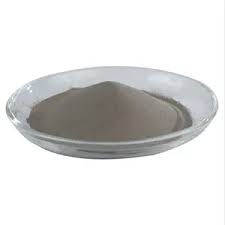Aluminum 7075 Based Metal Spherical Powder
Formula | Aluminum 7075 |
Synonyms | Aluminum 7075 spherical particles, Aluminum 7075 spherical powders, Al7075 Powder, Aluminum 7075 thermal spray powder, Al 7075 gas atomized powder |
Appearance | Silver grey Powder |
Particle Size | 0-45 um, 45-105 um, can be customized upon request |
Melting Point | 477 °C |
Density | 2.81 g/cm 3 |
Yield strength | 503 MPa |
Ultimate tensile strength | 572 MPa |
Description of Aluminum 7075 Spherical Powder
Aluminum 7075 Spherical Powder consists mainly of aluminum with about 4.4-4.8% zinc, 1.2-1.6% magnesium, and small amounts of copper and chromium. It is known for its high strength and excellent fatigue resistance. The spherical shape improves flowability and packing density, making it ideal for additive manufacturing in aerospace and automotive applications.
Princeton Powder is a leading supplier of Al7075 powder. We specialize in a comprehensive range of spherical powder products and possess extensive expertise in additive manufacturing (3D printing) industry. Aluminum 7075 powder is for sale at a competitive price in USA.
Chemical Composition
Chemical Composition (wt%) | |||||||||
Item | Si | Fe | Cu | Mn | Mg | Cr | Zn | Ti | Al |
| 7075 Aluminum Alloy | 0.4 | 0.5 | 1.2-2.0 | 0.3 | 2.1-2.9 | 0.18-0.28 | 5.1-6.1 | 0.2 | Bal. |
Oxygen: 500 ppm
Particle Size distribution
0-15μm, 15-53μm, 45-105μm, 45-150μm. (Various particle sizes can be customized)

Applications
Aluminum 7075 spherical powder is primarily used in additive manufacturing (3D printing) to produce high-strength, lightweight components for aerospace, automotive, and defense industries. Its excellent mechanical properties and flowability make it suitable for creating complex, high-performance parts that require superior strength and durability. Additionally, it is used in metal injection molding and for repairing or coating components through advanced powder-based techniques.
Spherical Aluminum alloy 7075 Powder Reference
- Fabrication of high strength aluminum alloys using laser-based powder bed fusion (L-PBF) encounters challenges, including the occurrence of solidification cracks and the loss of volatile elements, such as Zn and Mg. The current work developed a Si-modified Al7075 alloy aiming at introducing eutectic phases to mitigate the solidification cracking during L-PBF. Based on Kou’s model, the addition of Zn and Mg decreased the crack susceptibility from 6504 to 5966 °C, and the addition of 3.74 wt% of Si further decreased the crack susceptibility to 3960 °C. The Al7075 alloy fabricated by L-PBF exhibited a large amount of solidification cracks extending throughout the sample.
Aluminum 6061: 0.8-1.2% magnesium, 0.7-1.0% silicon, small amounts of copper, chromium, and other elements.
Aluminum 7075: 4.4-4.8% zinc, 1.2-1.6% magnesium, small amounts of copper, chromium, and other elements.
Aluminum 7075 processing methods include:
- Milling and Turning: For precision machining and complex parts.
- Extrusion: To produce profiles, tubes, and other elongated components.
- Heat Treatment: Includes solution heat treatment and aging to enhance strength and hardness.
- Welding: Although challenging, specialized techniques are used for welding complex structures.
- Casting: Used for producing large, complex parts through molds.
Aluminum 7075 Spherical Powder production involves specific raw materials and methods:
Raw Materials:
- Aluminum 7075 Alloy: The base material used, which includes aluminum with approximately 4.4-4.8% zinc, 1.2-1.6% magnesium, and other elements.
Production Methods:
Gas Atomization:
- Process: Molten Aluminum 7075 is sprayed with high-pressure inert gas (like nitrogen or argon) to form fine spherical particles.
- Advantages: Produces high-quality, spherical powders with good flowability and packing density.
Plasma Atomization:
- Process: The aluminum alloy is melted using a plasma torch, and the molten metal is ejected and solidified into spherical particles.
- Advantages: Provides very high-purity powders with excellent flow characteristics.
Rotating Electrode Process (REP):
- Process: A rotating electrode made of Aluminum 7075 is melted using an electric arc, and the molten metal is thrown off by centrifugal force to form spherical particles.
- Advantages: Produces highly spherical powders with uniform size.
These methods ensure the production of high-quality spherical powders suitable for additive manufacturing and other advanced applications.

